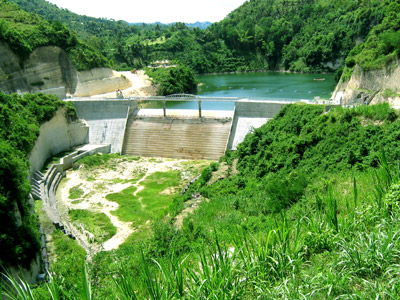Newly constructed dam in Cebu now sold as tourism site

Cebu City – A P585.7 million irrigation project, mainly funded by the Asian Development Bank (ADB) in Carcar, Cebu is seen as the next major tourism attraction in Central Visayas.
With nearly 96 percent of the Can-asujan small reservoir irrigation project already completed, local officials of Carcar town are planning to promote the area as an ecotourism destination for both domestic and foreign travelers.
Carcar town Vice Mayor Regelio Montesclaros said that this early, the project site, strategically located amidst a lust green forest, has been luring in tourists interested in fishing, boating and hiking.
Located 40 kilometers south of Cebu city, the project which covers a reservoir surface area of 32.8 hectares and a watershed area of over 39 square kilometers is seen to play an important role in the future of Cebu province.
Diosdado Rosales, National Irrigation Administration provincial officer, said the Can-asujan dam, which can hold 2.45 million cubic meters of fresh water is now the largest in Cebu and can be the main source of potable water for most parts of the province within ten years.
The Can-asujan irrigation project is one of the 13 sub-projects under the $60 million Southern Philippines Irrigation Sector project financed by the ADB.
Rosales said Can-asujan is the first of its kind in Asia, because it used a mixture of soil and cement for its hardfill main body.
With a height of 25 meters and length of 136 meters, the dam now provides water to a gravity-fed irrigation service area of about 782 hectares benefiting some 885 households.
This type of dam combines the construction ease of an earth embankment dam with the resilience to overtopping of a concrete dam, the ADB said.
The dam, constructed by Chinese firm China Electric Power Technology Import and Export Corp., is said to be resistant to earthquake/seismic activity while its simple construction design resulted in big savings in construction costs.
Can-asujan Hardfill Dam is the second highest to be built anywhere in the world and is the first to be built in Asia, according to NIA.
Rosales said that with the opening of the dam in November 2005, rice and vegetable farmers can now have at least two cropping seasons each year.
Rice farmers, for example, are expected to increase their earnings to P35,200 per hectare with the completion of the irrigation project from only P20,000 in the previous harvests.
The ADB said the purpose of the projects is to raise agriculture production and farmers' income in the Southern Philippines. Roderick T. dela Cruz